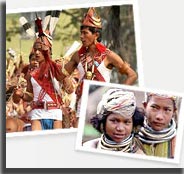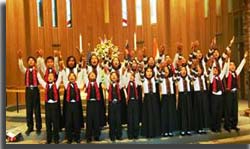History
Hmar tribe is also called as Mhar or Mar and they are the dwellers of the North Eastern Part of India. They inhabit Meghalaya, Mizoram, Cachar, Chittagong Hill Tracts and Tripura. Hmar Tribe finds their roots from a place called Sinlung which is the ancestral home of Zonhnathlak. It remains still a controversy if they are from Sinlung but eventually left Sinlung which was once a democratic state. They gained recognition as one of the Scheduled Tribes as per the 6th Schedule of Constitution of India. Hmar tribe belonged to the Chin-Kuki-Mizo group of tribes & they reside in the southern area of Manipur state, especially in the districts of Churachandpur and its neighbouring regions. This area of Tuthapati and mighty rivers like Tuiruong & Tuithapui also flow through this area.In the year 1910 a Welsh Missionary Watkin Roberts introduced the Hmar Tribe of mainly southern region of Manipur to Christianity. The Hmar Tribe migrated from China and settled first in Burma and scattered in & around Manipur, Mizoram and North Cachar Hills in Assam. Hmars are of Mongoloid stock. Though the Hmar tribal Community is divided into exogamous clans they do not strictly adhere to exogamy. They strictly follow Monogamy. Arranged cum Love-Marriages are preferred. As per the Hmar geneology, Lawitlang, Zote, Lungtau, Thiek, Khawbung, Pakhuong, Faihriem, Darngawn, Leiri, Ngurte, Khiengte, Pautu and Ngente are the major clans of the Hmar tribal community.
Culture
Hmar Tribe tradition is of revering dance forms, festivals, music etc. Their expertise is shown in the Conventional folk dance, folk songs that are nicely represented by scenes of adventure, battle, love, victory and other experiences throughout history. The culture is enriched with amazing tribal songs and dance forms. Khuong is a kind of drum they play during the tribal dance and song performances. Other musical instruments like Seki, Theilea (bamboo flute), Darbu (set of small gong), Hna Mut (Leaf Instrument), Perkhuong (guitar made of bamboo), Darmang (Flat brass gong), etc are also used. Haverst dance is famous dance included in their folk dances which known as Chon Lam and the festival dance is called as Thangkawngvailak and even hunting dance which is called as Salu Lam.

In Hmar tribal Community still the system of bride price is prevalent & the youngest daughter usually gets an extra price called 'Nuzum'. Earlier the tribe practiced animism & their God was "Pathien" & sacrifices were offered for his appeasement. Today almost the whole of the tribe is converted into Christianity & Hmar Tribes have built churches in their villages & religious rites are performed according to the rules of Christianity. Hmars built their villages on hill -tops & houses are constructed on wooden planks. Slash & burn system of agricultural practices is still at large by the Hmar Tribe.
Place /Location (then and now) |
Manipur, Mizoram |
Population |
55% ot total tribal population |
Languages spoken |
Hindi, English & Hmas |
Religion/God |
Pathien God
|
Food |
Two millets known as Kodo and Kutki and Green Leafy Vegetables |
Occupation
Hmar Tribes are cultivators as they make their livelihood from farming. Medium statured people believe in their hands and are known for their bravery. Hmar women are great weavers in their tiny loin looms. Women dye their homespun yarns into different colours and weave exquisite clothes for the family.
People

Traditional dress of Hmar Tribal community is colorful filled with bright and radiant colors. Girls wear short skirts and the men wear coats and chongas.
Language
The language of HmarTribe is Hindi, English and Hmas is the language day to day life. They are primarily Baptists and follow Christianity. But then with the changing times, one can find pretty educated Hmars working in various fields and making handicrafts. The handicrafts made by Hmars usually depict scenes of battles, adventure, love, victory and their history.
Festivals

To honour the great hunter they perform Pheiphitlam dance accompanied by melodious tune trilling from their flutes.
To perform in one of the festivals called Fahral Tawk lam, they use bamboo poles like the Mizos (in their famous Cheraw dance).


